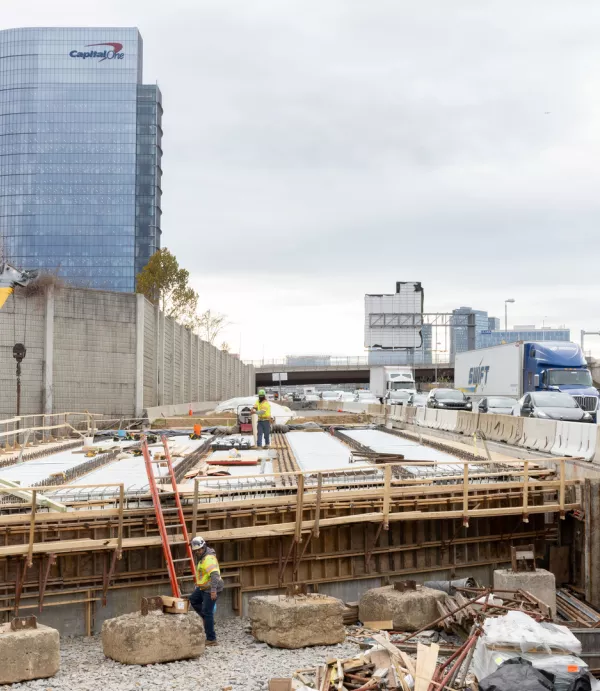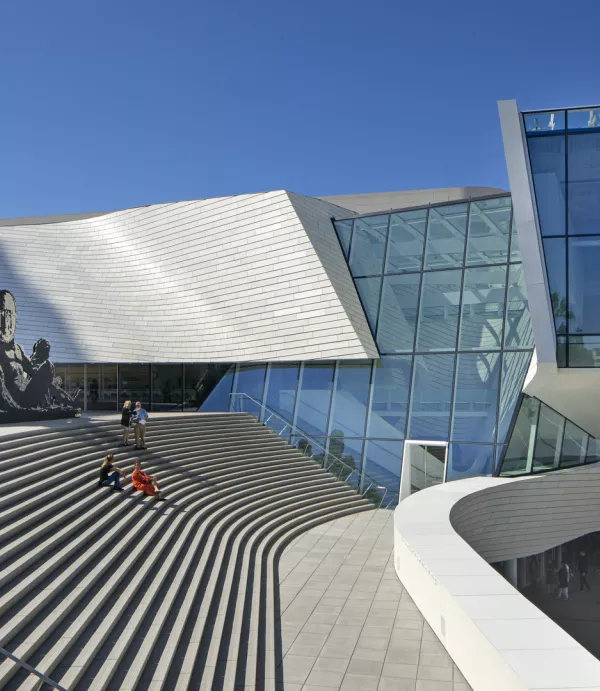Prefab Benefits Largest Hospital Construction Project in Washington, DC
February 22, 2022
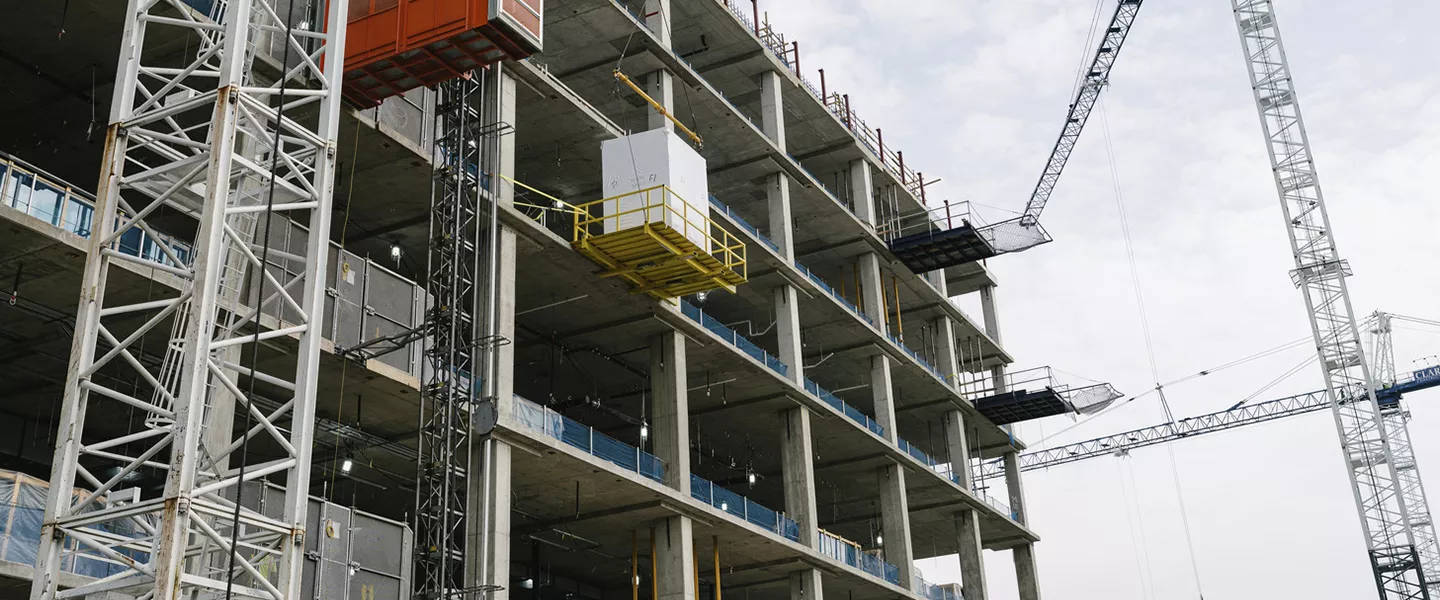
Sometimes, the fastest way to the finish is not a straight line. While construction traditionally employs a “linear build” method, where critical schedule milestones follow one after the other, prefabrication of building elements during a project enables progress on several fronts simultaneously. On the 477,000-square-foot MedStar Georgetown University Hospital Medical/Surgical Pavilion in Washington, DC, the project team is strategically using prefabrication to increase project efficiency.
The benefits of prefabrication are best realized on buildings with multiple similar components. The new Medical/Surgical Pavilion will feature 156 private patient rooms, a rooftop helipad with direct access to 31 state-of-the-art operating rooms, and 32 exam rooms in a modernized emergency department. Clark worked closely with the hospital and design team during project development to determine which components were best suited to be manufactured off site. Using a formal scoring and evaluation process, the team identified 156 in-patient bathrooms and other spaces which, when prefabricated, would provide the greatest cost and schedule benefits to the project.
Image
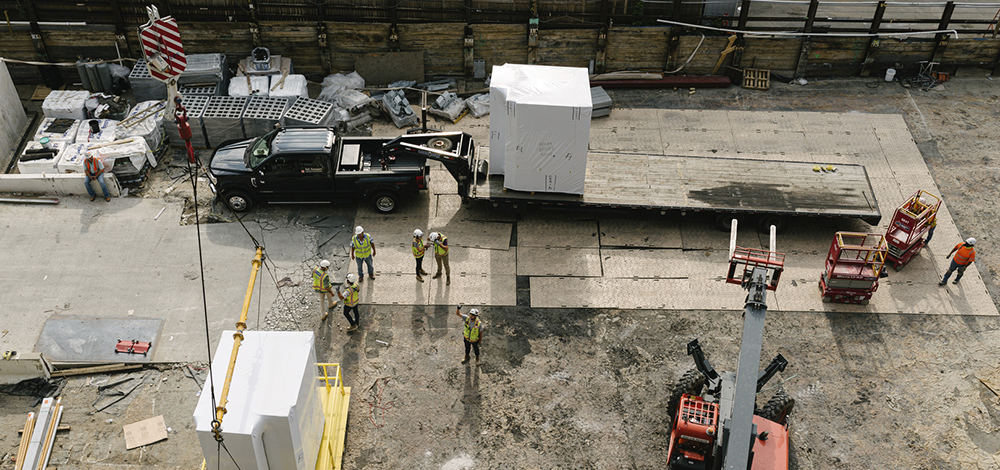
Early in construction, Clark built mockups of key interior spaces with prefabricated components, expediting reviews and approvals that were critical to maintaining the project’s aggressive schedule. By the time concrete topped out last summer, installation of more than a dozen premanufactured interior elements was well underway. In October, 26 trucks, each carrying six bathrooms on their truck bed, began their journey from a manufacturing facility in Texas to Washington, DC. Each 60-square-foot bathroom pod was then lifted into the building using a crane to complete the installation.
Operating room ceilings provided another unique opportunity to capitalize on the benefits of prefabrication. Equipping the new facility with the latest technology was critical to providing best-in-class healthcare to patients. With prefabrication, the steel support could be built to accommodate maximum tolerances, ensuring the ceilings were capable of supporting future iterations of operating room technology, and ultimately keeping the hospital on track to adapt and provide the latest healthcare advancements to those in its care.
Image
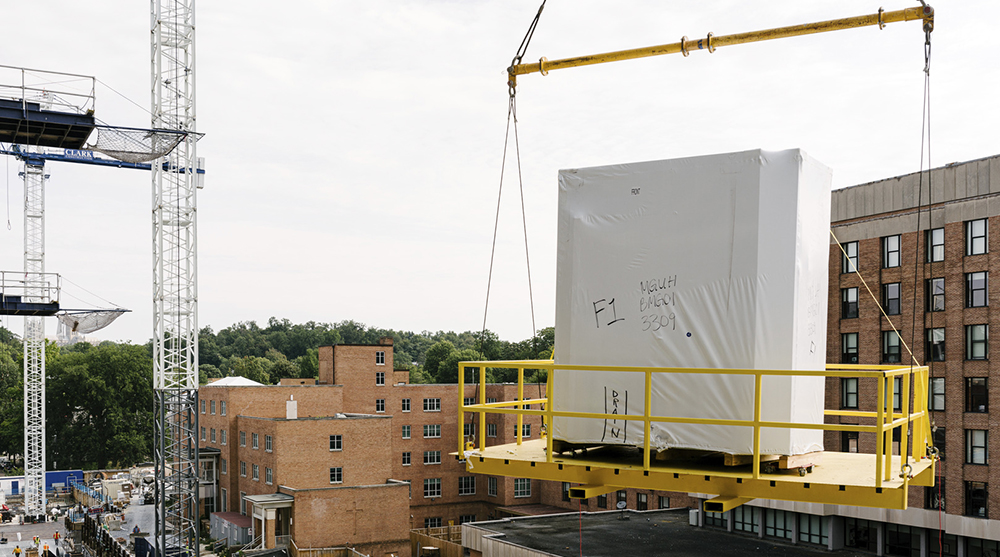
Beyond schedule and cost savings, prefabrication has resulted in additional benefits at MedStar Georgetown. A smaller workforce on site has increased construction safety, minimized congestion, and reduced disruption to the active Georgetown University campus, hospital, and surrounding community. In addition, strict quality standards could be achieved when manufacturing elements off site in a controlled environment. Most importantly, prefabrication will allow the hospital to provide a more consistent experience for the end user, supporting patient treatment and recovery.
